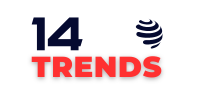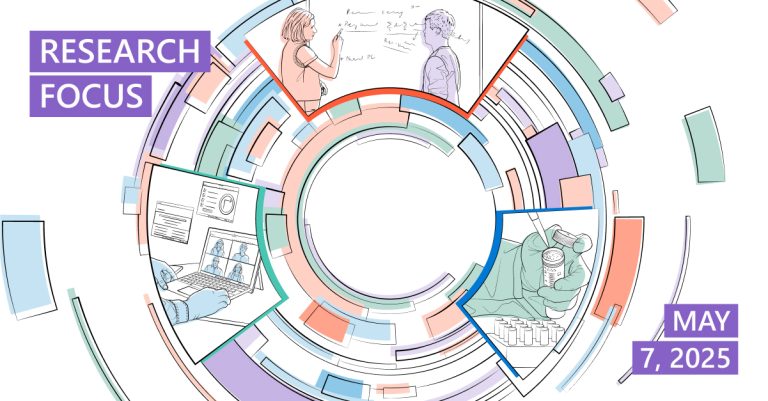In this issue:
New research on compound AI systems and causal verification of the Confidential Consortium Framework; release of Phi-4-reasoning; enriching tabular data with semantic structure, and more.

NEW RESEARCH
Towards Resource-Efficient Compound AI Systems

This research introduces Murakkab, a prototype system built on a declarative workflow that reimagines how compound AI systems are built and managed to significantly improve resource efficiency. Compound AI systems integrate multiple interacting components like language models, retrieval engines, and external tools. They are essential for addressing complex AI tasks. However, current implementations could benefit from greater efficiencies in resource utilization, with improvements to tight coupling between application logic and execution details, better connections between orchestration and resource management layers, and bridging gaps between efficiency and quality.
Murakkab addresses critical inefficiencies in current AI architectures and offers a new approach that unifies workflow orchestration and cluster resource management for better performance and sustainability. In preliminary evaluations, it demonstrates speedups up to ∼ 3.4× in workflow completion times while delivering ∼ 4.5× higher energy efficiency, showing promise in optimizing resources and advancing AI system design.
NEW RESEARCH
Smart Casual Verification of the Confidential Consortium Framework

This work presents a new, pragmatic verification technique that improves the trustworthiness of distributed systems like the Confidential Consortium Framework (CCF) and proves its effectiveness by catching critical bugs before deployment. Smart casual verification is a novel hybrid verification approach to validating CCF, an open-source platform for developing trustworthy and reliable cloud applications which underpins Microsoft’s Azure Confidential Ledger service.
The researchers apply smart casual verification to validate the correctness of CCF’s novel distributed protocols, focusing on its unique distributed consensus protocol and its custom client consistency model. This hybrid approach combines the rigor of formal specification and model checking with the pragmatism of automated testing, specifically binding the formal specification in TLA+ to the C++ implementation. While traditional formal methods are often one-off efforts by domain experts, the researchers have integrated smart casual verification into CCF’s continuous integration pipeline, allowing contributors to continuously validate CCF as it evolves.
NEW RESEARCH
Phi-4-reasoning Technical Report

This report introduces Phi-4-reasoning (opens in new tab), a 14-billion parameter model optimized for complex reasoning tasks. It is trained via supervised fine-tuning of Phi-4 using a carefully curated dataset of high-quality prompts and reasoning demonstrations generated by o3-mini. These prompts span diverse domains—including math, science, coding, and spatial reasoning—and are selected to challenge the base model near its capability boundaries.
Building on recent findings that reinforcement learning (RL) can further improve smaller models, the team developed Phi-4-reasoning-plus, which incorporates an additional outcome-based RL phase using verifiable math problems. This enhances the model’s ability to generate longer, more effective reasoning chains.
Despite its smaller size, the Phi-4-reasoning family outperforms significantly larger open-weight models such as DeepSeekR1-Distill-Llama-70B and approaches the performance of full-scale frontier models like DeepSeek R1. It excels in tasks requiring multi-step problem solving, logical inference, and goal-directed planning.
The work highlights the combined value of supervised fine-tuning and reinforcement learning for building efficient, high-performing reasoning models. It also offers insights into training data design, methodology, and evaluation strategies. Phi-4-reasoning contributes to the growing class of reasoning-specialized language models and points toward more accessible, scalable AI for science, education, and technical domains.
NEW RESEARCH
TeCoFeS: Text Column Featurization using Semantic Analysis

This research introduces a practical, cost-effective solution for enriching tabular data with semantic structure, making it more useful for downstream analysis and insights—which is especially valuable in business intelligence, data cleaning, and automated analytics workflows. This approach outperforms baseline models and naive LLM applications on converted text classification benchmarks.
Extracting structured insights from free-text columns in tables—such as product reviews or user feedback—can be time-consuming and error-prone, especially when relying on traditional syntactic methods that often miss semantic meaning. This research introduces the semantic text column featurization problem, which aims to assign meaningful, context-aware labels to each entry in a text column.
The authors propose a scalable, efficient method that combines the power of LLMs with text embeddings. Instead of labeling an entire column manually or applying LLMs to every cell—an expensive process—this new method intelligently samples a diverse subset of entries, uses an LLM to generate semantic labels for just that subset, and then propagates those labels to the rest of the column using embedding similarity.
NEW RESEARCH

This work introduces ARTIST (Agentic Reasoning and Tool Integration in Self-improving Transformers), a new paradigm for LLM reasoning that expands beyond traditional language-only inference.
While LLMs have made considerable strides in complex reasoning tasks, they remain limited by their reliance on static internal knowledge and text-only reasoning. Real-world problem solving often demands dynamic, multi-step reasoning, adaptive decision making, and the ability to interact with external tools and environments. In this research, ARTIST brings together agentic reasoning, reinforcement learning (RL), and tool integration, designed to enable LLMs to autonomously decide when and how to invoke internal tools within multi-turn reasoning chains. ARTIST leverages outcome-based reinforcement learning to learn robust strategies for tool use and environment interaction without requiring step-level supervision.
Extensive experiments on mathematical reasoning and multi-turn function calling benchmarks show that ARTIST consistently outperforms state-of-the-art baselines, with up to 22% absolute improvement over base models and strong gains on the most challenging tasks. Detailed studies show that agentic RL training leads to deeper reasoning, more effective tool use, and higher-quality solutions.
PODCAST
Materialism Podcast: MatterGen (opens in new tab)
What if you could find materials with tailored properties without ever entering the lab? The Materialism Podcast, which is dedicated to exploring materials science and engineering, talks with Tian Xie from Microsoft Research to discuss MatterGen, an AI tool which accelerates materials science discovery. Tune in to hear a discussion of the new Azure AI Foundry, where MatterGen will interact with and support MatterSim, an advanced deep learning model designed to simulate the properties of materials across a wide range of elements, temperatures, and pressures.
IN THE NEWS: Highlights of recent media coverage of Microsoft Research
When ChatGPT Broke an Entire Field: An Oral History
Quanta Magazine | April 30, 2025
Large language models are everywhere, igniting discovery, disruption and debate in whatever scientific community they touch. But the one they touched first — for better, worse and everything in between — was natural language processing. What did that impact feel like to the people experiencing it firsthand?
To tell that story, Quanta interviewed 19 NLP experts, including Kalika Bali, senior principal researcher at Microsoft Research. From researchers to students, tenured academics to startup founders, they describe a series of moments — dawning realizations, elated encounters and at least one “existential crisis” — that changed their world. And ours.



